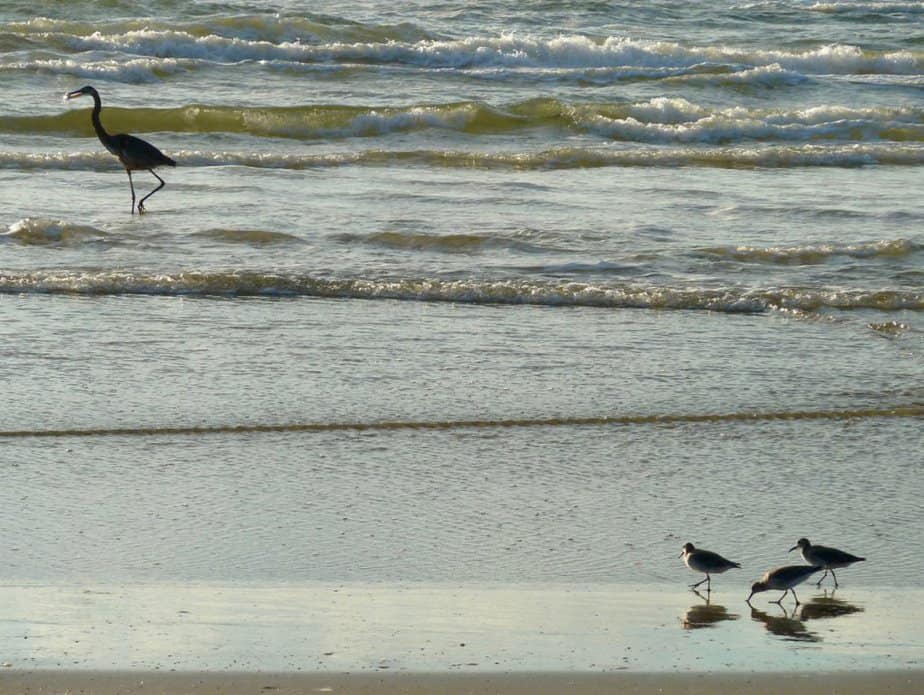I just arrived in Corpus Christie to finish our study of shorebird migration along the Texas gulf coast. As you can imagine this is Texas-size coast, more than two times the length of New Jersey’s Atlantic coast and mostly wild. Our work focuses on two areas, Mustang Island just east of Corpus Christie and Padre Island National Seashore just south. Padre Island, sometimes known as “Peregrine Alley“, is a huge chunk of Gulf coast, itself nearly the size of the New Jersey coastline.
Bill Howe and David Newstead at Padre island National Seashore
The shorebirds of this area are an enigma. Most of the arctic-nesting shorebirds on the US east coast spend the winter (the non-breeding period) in the southern US or South America. They fly north through the US east coast on their way to arctic breeding areas, and many come through the Delaware Bay. We know something of their complex life history because we have banded over 30,000 shorebirds of three species on Delaware Bay with small leg flags bearing alpha-numeric codes. The coded flags allow observers to identify individuals at 50 yards (with a spotting scope). We even created a website where resighted leg flags can be reported .
 Red Knot with leg flag
Red Knot with leg flag
One shorebird, the Red Knot, has been the focus of many people including naturalists that have reported hundreds of flagged birds. With all the work done on red knot, we know more about their migration pathway than most other shorebirds. One measure of our success is the rate at which we see flagged birds, usually one out of every ten red knots in Delaware Bay. In Texas we see, at best, one out of 500 knots with a flag – most are unbanned. What does this mean? Texas knots are using a different flyway than the east- and west-coast knots. Moreover, they are not using any of the known migration stopover sites or wintering areas and are likely not breeding in arctic areas where east- and west-coast knots are breeding. Even after decades of intensive shorebird study these birds need more study. This is why shorebirds are a favorite for many people, not only biologists but others who are curious and passionately interested in the outdoors . Unraveling this will take some work.

